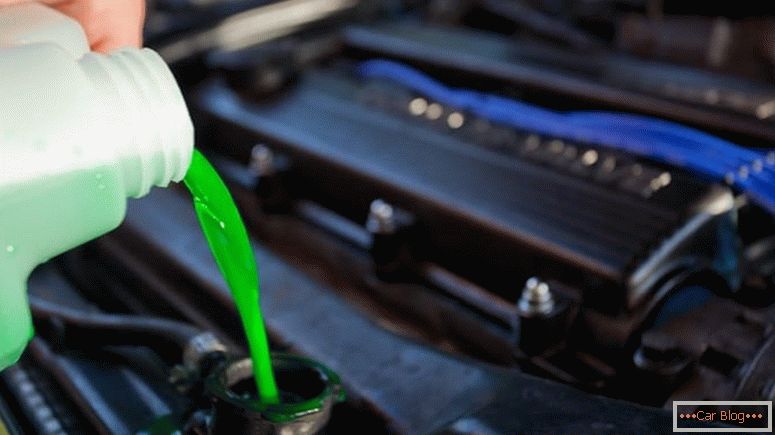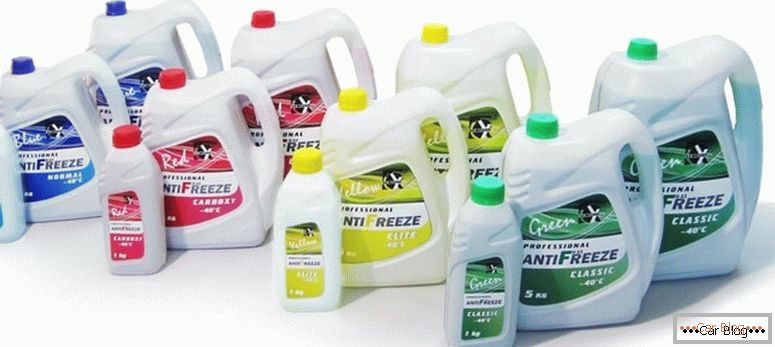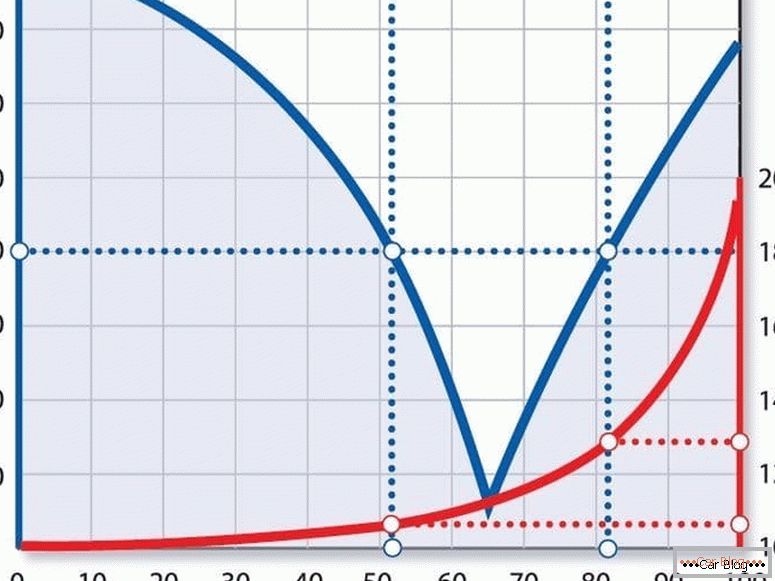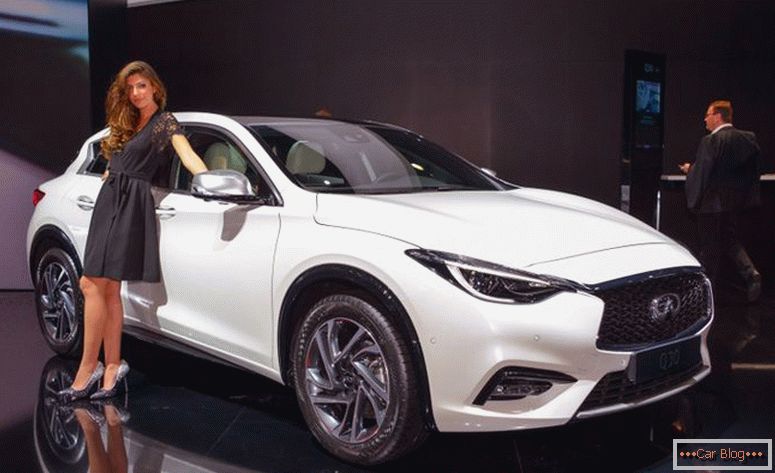Every motorist necessarily faced the issue of replacing antifreeze for one reason or another:
- Antifreeze life has expired;
- The freezing point of the coolant does not meet the requirements of operation;
- In the process, due to leaks, refilling was performed with antifreeze of unknown quality or water;
- At the request of the user, for example, after the engine overhaul, a new coolant is poured in using the new oil;
- Antifreeze has drastically changed its color and structure during operation.
And many more factors can cause the replacement of antifreeze in a car. As practice shows, the issue of replacing antifreeze motorists often face the onset of cold weather. However, this should be done not depending on the ambient temperature, but due to objective technical conditions.
The domestic market offers a huge selection of coolant of various brands, markings and colors. There are also frank fakes. Instead of antifreeze, there may be simply tinted water. Very often, various chemicals are added to these forgeries, which increase the density of the composition. This is necessary in order to show the buyer that the freezing point of this product is high (in the original antifreeze, the density is directly proportional to the freezing point). Thus, when operating a car on fakes of antifreeze, you will encounter a number of problems. The most unpleasant of them - the failure of parts of the engine cooling system and passenger compartment heating. Naturally, I do not want to be a victim of fraudsters, risking damage to the “iron horse” and personal safety.
Content
- 1 What is antifreeze
- 2 Composition
- 3 Classification
- 4 Which antifreeze is better to choose
- 5 Terms of use
What is antifreeze

Antifreeze is specially painted in "poisonous" colors to show that this liquid is harmful to humans and nature.
Antifreeze from Latin is translated as "non-freezing." In essence, this is a chemical mixture, which is a liquid with a freezing point lower than that of water. This property is used at sub-zero temperatures for de-icing and for cooling internal combustion engines.
From the lessons of physics, we all know that water during freezing increases in volume, and if it were poured into the cooling system of the car, then during crystallization it would simply “tear” or damage those tanks and channels through which it circulated.
That is why in cars, namely in the cooling system, antifreeze is circulating, which does not freeze (crystallizes) during operation and does not allow deformation of parts.
See also: Possible engine cooling system malfunctionsComposition
Antifreeze for a car contains the following components:
- Ethylene glycol or polypropylene glycol (unlike ethylene glycol, it is less toxic);
- Additive package;
- Dye;
- Distilled water.
The ratio of these ingredients is directly related to the coefficient of expansion of water during freezing. If pure water expands by nine percent during crystallization, then in a mixture with other components of antifreeze, this percentage may drop to one and a half. This suggests the safe use of automotive antifreeze in cold weather at low temperatures.
Ethylene glycol, like polypropylene glycol, has another property - an elevated boiling point. This improves its properties when the system is cooled in the hot season.
The additive package includes anti-corrosion, anti-foam, lubricating components. It can vary in composition and quality, which directly affects the price.
Dye initially does not carry any technological load, is rather a “lure” for the customer’s visual perception. Antifreeze, what color is better to buy, is not decisive, only determines your individual color preferences.

Antifreezes come in different brands, colors and compositions
But if the color changes during operation, it can tell a lot to a seasoned motorist. A change in color or the appearance of sediment or flakes in its composition indicates the unsuitability of its further use. If when buying a used anti-freeze car it turns out to be brown or brown, then you can be completely sure that no one followed the engine and it most likely overheated many times. Such equipment is not worth buying!
Classification
Automotive antifreeze is divided into three main groups. The main difference between antifreeze from each other is the composition of the proposed additive package (inhibitors).
- Automobile antifreezes of a class G-11 (hybrid). The composition of such antifreeze additives include both organic and inorganic properties (borates, silicates, phosphates, nitrites, and others). They belong to cheaper means and tend to settle the silicone layer over the entire surface of the cooling system. In this case, the efficiency of the process is reduced due to deterioration of heat transfer. The service life of antifreeze class G-11 from three to five years.
- Automobile antifreezes of the class G-12 (carboxylate). The main difference of antifreezes of this class is that the additives used are based on carboxylic (organic) acids. Additives of such a plan are distributed only in areas prone to corrosion, not deposited on the entire surface. Due to this, heat transfer is not disturbed and the efficiency of the cooling system increases. Antifreezes of this class can be used in engines of machines with high revs, where high heating occurs and effective regulation of temperature is required. The life of antifreeze class G-12 is more than five years.
- Car antifreezes class G-13. Antifreezes of this class are made with the content of polypropylene glycol and organic additives (mineral inhibitors), they do not contain toxic substances and quickly decompose when disposed of. This group of goods appeared according to the requirements of the environmental safety of European manufacturers and refers to better and more expensive.
What antifreeze is better выбрать
The most rational approach to the choice of antifreeze for your car is to push off from the technical characteristics of the car, taking into account the specifications for admission. Each car has its own specification for admission, for example:
- For Ford, the specification for FORD SSM-97B9102A approval;
- For Volkswagen VW TL-774 approval specification;
- For BMW specification for BMW approval No. 600.69.0.
The necessary information can be obtained in the car's instruction manual or on the websites of official dealers.
Terms of use
What antifreeze to choose, we have decided, now we will discuss the rules of its optimal use.

In the preparation of antifreeze from concentrate, it is important to respect the proportion
Automotive antifreeze is changed according to plan or as needed, if its extraordinary replacement is not dictated by the conditions of car repair. Also, do not mix different in characteristics and types of liquid for cooling - this is fraught with unpleasant "surprises" for your car. If you do not remember which antifreeze was previously poured, then it is better to drain all the old first, and then pour a new one. Mixing different types of antifreeze is not recommended for the reason that the additive packages can be of completely different properties and as a result of chemical reactions they will unbalance. Possible breakdowns as a result of mixing different in composition of additives and the occurrence of ballast sediment: failure of the water pump, clogging of the cooling system, overheating of the motor, overhaul.
Do not save on liquid for cooling - poor-quality antifreeze can cause damage to the engine and cooling system!
Automotive antifreeze is sold in a concentrated or diluted state, already suitable for full use. Many motorists prefer to buy the concentrate in order to independently dilute the solution in the right proportion. However, it must be remembered that it is necessary to dilute only with distilled water, and the proportion itself is determined by the required freezing point. In each case, you must follow the instructions of the concentrate manufacturer only.



